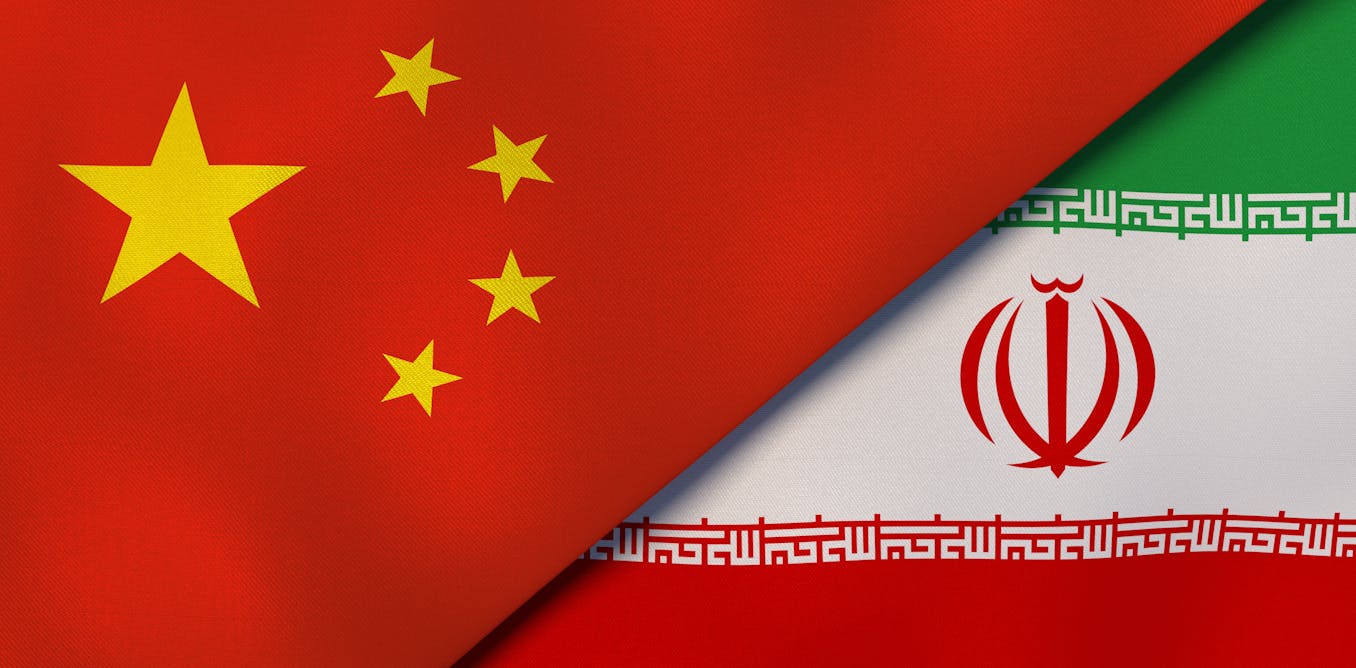China
The end of China’s labour reform?

Author: Kevin Lin, International Labor Rights Forum
In 2009, Time magazine selected ‘The Chinese Worker’ as the runner-up to its Person of the Year. Reflecting on China’s 8 per cent economic growth rate one year after the global financial crisis, the magazine asked, ‘Who deserves the credit? Above all, the tens of millions of workers who have left their homes, and often their families, to find work in the factories of China’s booming coastal cities … Chinese men and women, their struggles in the past, their thoughts on the present and their eyes on the future’.
Leading up to 2009, labour dispute cases and workers’ strikes skyrocketed. Workers were becoming more confident in their ability to organise and pressure their employers and the local authorities for better conditions and legal protection. This created real momentum for labour reforms.
Chinese workers have since benefited from their government’s labour reforms. Government-mandated minimum wages increased significantly and real wages are growing. The government endorsed the legitimacy of workers’ ‘rights protection’. In 2018, the government enacted legal reforms such as the Labor Contract Law to strengthen legal protection. The Labor Dispute Mediation and Arbitration Law offered dispute resolution mechanisms to resolve workplace grievances.
The All-China Federation of Trade Unions trialled union reforms that increased union membership and recognised workers’ role in negotiating with employers through collective bargaining. Awareness and protection of occupational health and safety also increased. There is greater recognition of the importance of protecting female workers against discrimination in hiring and promotion. Institutionalised urban discrimination against rural migrant workers has decreased and rural migrant workers have more access to urban amenities as a result of hukou reforms.
But in other respects, Chinese workers have either not gained significantly or lost ground. Reforms to curb informalisation of labour have not stopped the use of agency workers who are paid less than their co-workers or student interns forced by their schools to work in jobs unrelated to their studies. According to China’s National Bureau of Statistics, the percentage of rural migrant workers with a labour contract declined from 43.9 per cent in 2012 to 35.1 per cent in 2016.
The labour reforms under the Hu–Wen administration aimed to accommodate workers’ interests and incorporate workers into the industrial relations system. Yet labour strikes continued to increase after 2009. Large-scale factory strikes took place each year over low wages, non- or under-payment of social insurance contributions and lack of layoff compensation.
This was partly due to China’s slowing economic growth triggering more disputes and problematic reforms. Barriers remain in accessing legal mechanisms for resolving disputes. The union reforms were top-down and bureaucratic — workers were not empowered to negotiate with management.
By the mid-2010s, the Chinese government began to show its growing impatience with the labour reforms. The clearest sign of this was the closing down of non-government labour rights organisations in Guangzhou and the arrests of their staff who worked to protect workers’ rights and promote collective bargaining in December 2015.
The crackdown had chilling effects among labour groups and signalled the government’s intention to criminalise independent rights advocacy. It was part of a broader political shift preceded by the arrests of human rights activists, lawyers, anti-discrimination and feminist activists a few months earlier.
In mid-2018, a unionisation drive by workers at Jasic Technology in Shenzhen precipitated a new round of repression against workers and college students who came out to support them. The repression has since widened and spread to other labour activists unconnected to Jasic.
The nature of state repression is shifting from punitive to pre-emptive. Authorities are rounding up activists who are capable of helping workers rather than for any specific actions they have taken. The space for workers to organise has been narrowed to its slimmest in the last decade.
The optimism for more labour reforms from a decade ago now seems extinguished. Labour reforms have either stalled or lost momentum altogether. There has been no major labour legislation for several years and union reforms have stopped.
New challenges to labour relations are emerging. Unemployment is a key government concern. Manufacturing jobs are…
Business
China Considers Selling TikTok US Operations to Musk as a Viable Option – Bloomberg

China is considering the sale of TikTok’s U.S. operations to Elon Musk as a potential option, according to a report by Bloomberg.
Potential Sale of TikTok to Elon Musk
Reports suggest that China is considering the sale of TikTok’s U.S. operations to Elon Musk as a viable option. This development follows ongoing scrutiny over the app’s data privacy practices and its links to the Chinese government. Officials believe that a sale could alleviate international concerns and preserve the platform’s presence in the U.S. market.
Strategic Implications
The potential transaction raises numerous strategic implications, not only for TikTok but also for Musk’s other ventures. If Musk were to acquire TikTok, it could enhance his digital footprint and provide new avenues for advertising and user engagement. Conversely, it could pose challenges in managing regulatory compliance and addressing data security issues.
Regulatory Hurdles Ahead
Despite the intriguing prospect of a sale, significant regulatory hurdles remain. Any acquisition would require approval from U.S. authorities, who continue to assess the risks associated with foreign ownership of tech companies. The outcome of these discussions could have widespread ramifications for both TikTok and the broader social media landscape.
Source : China Weighs Sale of TikTok US to Musk as a Possible Option – Bloomberg
China
Essential Insights into NGO Accounting and Compliance in China

China will implement an updated accounting system for non-profit organizations starting January 1, 2026, to standardize financial reporting and enhance management practices. The changes address evolving challenges in the NGO sector, ensuring regulatory compliance and effective donor fund management.
China has recently amended its accounting system for non-governmental non-profit organizations, with the new provisions set to take effect on January 1, 2026. As the number of NGOs continues to grow in the country, understanding the existing and updated requirements is crucial for organizations seeking to maintain regulatory compliance and effectively manage donor funds.
On December 20, 2024, the Ministry of Finance (MOF) unveiled the updated Accounting System for Non-governmental Non-profit Organizations (hereinafter, the “NGO Accounting System”), set to take effect on January 1, 2026.
Among others, the revision of the NGO Accounting System is designed to standardize financial reporting, enhance management practices, and provide a regulatory framework to support the high-quality development of non-governmental organizations (NGOs). As the sector expands and diversifies, new challenges have arisen, such as increasingly varied donation methods, rising foreign investments, and the growing number of NGOs being established. In response to these developments, the updated system aims to address emerging accounting issues and reflect the evolving nature of the sector.
In this article, we provide an overview of the current accounting and compliance landscape for NGOs in China, explore the key provisions of the new NGO Accounting System, and highlight the significant changes introduced in the revision.
In China, NGOs encompass a wide range of organizations, including social service agencies, foundations, nonprofit schools, medical institutions, religious organizations (e.g., Taoist temples, mosques, churches), and various other social service providers. Much like their counterparts globally, NGOs play a crucial role in addressing social, environmental, and economic challenges. These entities, typically nonprofit, are dedicated to causes such as education, healthcare, environmental protection, and humanitarian aid.
China’s legal framework for NGOs is multifaceted, governed by several key laws and regulations:
Accounting for NGOs requires meticulous tracking of funds and compliance with specific regulations and reporting standards to ensure transparency and accountability to donors, stakeholders, and the public. Unlike the Accounting System for Business Enterprises (ASBE, commonly referred to as CAS), the Accounting System for NGOs imposes unique requirements for handling various types of donations, including asset and labor donations, as well as the management of entrusted agency business, where the NGO acts as an intermediary to transfer assets to a designated beneficiary. The system also differentiates between restricted and unrestricted net assets, outlines specific classifications for the costs associated with business activities, and includes additional disclosure requirements in the financial notes. As more NGOs establish a presence in China, these standards have gained increased attention in recent years.
| This article was first published by China Briefing , which is produced by Dezan Shira & Associates. The firm assists foreign investors throughout Asia from offices across the world, including in in China, Hong Kong, Vietnam, Singapore, and India . Readers may write to info@dezshira.com for more support. |
Read the rest of the original article.
China
The year ahead in the Middle East: A weakened Iran has big implications for China

Iran’s influence in the Middle East has significantly diminished post-Hamas’s Oct. 7 attack on Israel, impacting its alliances and prompting China to reconsider its relationship with Iran and strengthen ties with other regional powers.
The wheels of history have been turning rapidly in the Middle East over the last year.
For a significant period of time, Iran’s status as a rising power within the region has been regarded as a consistent reality in assessing Middle Eastern geopolitics. But events since the Oct. 7, 2023 attack by Hamas on Israel have seen Iran’s position in the region erode substantially. The balance of power in the Middle East has consequently been irreversibly altered.
A key pillar supporting Iran’s previously powerful status in the Middle East has been its cultivation of the “Axis of Resistance,” a group of Iranian allies across the region that acted together against Israeli and American interests.
The members of the axis, in addition to Iran itself, include Hamas, Hezbollah, Iraqi Shiite militias, the Houthis and Bashar al-Assad’s regime in Syria.
Read more:
Assad’s fall in Syria will further weaken Hezbollah and curtails Tehran’s ‘Iranization’ of region
Axis decimation
Israel’s relentless war in retaliation for the Oct. 7 attack has seen several of the most important members of the axis severely diminished, if not entirely decimated.
Both Hezbollah and Hamas have been humiliated through the destruction of their respective leaderships, and their operational capacities have been reduced significantly.
The largest blow to Iran’s proxy network was arguably the recent ousting of Syria’s Assad, ending a decades-long regime that was regarded by top Iranian strategists as Iran’s most important regional ally.
Syrians celebrate during a demonstration following the first Friday prayers since Bashar al-Assad’s ouster in Damascus’s central square on Dec. 13, 2024.
(AP Photo/Hussein Malla)
The adverse consequences of these developments for Iran’s grand strategy raises questions of how a significantly weakened Iran will affect the world at large, especially in terms of its impact on great power politics in the Middle East.
This undoubtedly represents a welcome development in the United States given the long-standing animosity towards post-1979 Iran among the American foreign policy establishment. But China is likely to have a more nuanced outlook predicated upon its commitment to pragmatic foreign policy maneuvering in accomplishing its top global objectives.
China’s engagement with Iran
As China has grown richer and more powerful in recent decades, it’s turned its attention to increasing its diplomatic clout and economic presence throughout the world. Every region of the planet has been affected by this development, but the Middle East achieved a spot of particular importance for China.
The Chinese government’s motivation to deeply engage in the Middle East has been — and continues to be — driven by several key considerations: the Middle East’s status as a powerhouse of oil production, its strategic geographic location bridging east and west, and its status as a long-standing pillar of American foreign policy.
China has fostered bilateral partnerships across the entire Middle East, but one of its longest regional relationships has been with Iran. In Iran, Chinese authorities saw a country that provided it with an opportunity to help it achieve China’s main objectives in the region.
Liu Zhenmin, China climate envoy, left, and Saudi Arabia Energy Minister Prince Abdulaziz Bin Salman, right, arrive for a plenary session at the COP29 UN Climate Summit in November in Baku, Azerbaijan.
(AP Photo/Rafiq Maqbool)
Post-1979, Iran was inherently anti-American, which meant that China was more likely to be warmly received by Tehran, especially when compared to other regional powers like Saudi Arabia that had relatively warm relations with the U.S.
Perhaps most importantly, Iran could be depended on — to an extent — to stymie American interests in the Middle East given its status as a rising regional power.
This is not to say that Iran became a Chinese client state, but rather that China could provide diplomatic and economic support to Iran as the Iranians used their power to act disruptively in a region of great strategic importance to the U.S.
China’s future moves
Given the motivations underlying deep Chinese-Iranian ties historically, it’s clear that the evaporation of Iran’s clout will likely greatly alter the character of their relationship moving forward.
In a nutshell, a significant portion of Iran’s appeal to Chinese policymakers has disappeared with the near annihilation of its regional network. This will likely encourage China to seek deeper ties with other Middle Eastern heavyweights, like Saudi Arabia and the United Arab Emirates, in accomplishing its goals in the Middle East — chief among them, increasing its regional influence at the expense of the U.S.
But it’s also unlikely China will entirely abandon Iran. While it may focus its most concerted efforts on developing deeper ties with other Middle Eastern countries instead of Iran, China would likely be hesitant to see Iran become even further isolated and therefore more predisposed to behaving aggressively.
China was one of the main behind-the-scenes mediators of the 2015 Iran nuclear deal because it wanted regional tensions to dissipate via Iran’s abandonment of its nuclear program.
Iranian Supreme Leader Ayatollah Ali Khamenei in Tehran, in May 2024.
(AP Photo/Vahid Salemi)
Now that Iran is weakened, it has essentially been boxed into a corner, and has two main options moving forward: either it achieves a rapprochement with the West, or it reinvigorates its nuclear program and acts more aggressively.
While Iran’s ultra-conservative factions that control the levers of power in the country may be tempted to take a more aggressive path, it is very possible China will attempt to use its substantial economic leverage over Iran to encourage them to pursue the rapprochement option.
That’s because the Chinese need the Middle East as a source of petroleum to fuel their economy, and because China doesn’t want to be viewed by the West as an implicit accomplice to a bellicose and destabilizing Iran.
China a moderating influence?
On the contrary, China is currently attempting to repair relations with many western countries given the importance of the West’s markets to China’s ailing economy.
In fact, China may wish to play a role in inducing Iran to strike a deal with the West in the near future, given that it would show the incoming Donald Trump administration — which is notoriously hawkish on China — that it can be trusted and worked with constructively.
At the end of the day, China will seek the path that minimizes the likelihood of full-blown conflict in the Middle East given the importance of the region to the Chinese economy. The country has a strategic opportunity to signal trustworthiness and dependability to the West by working to prevent Iran from choosing a more aggressive path.
This article is republished from The Conversation under a Creative Commons license. Read the original article.






